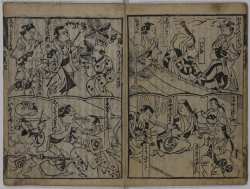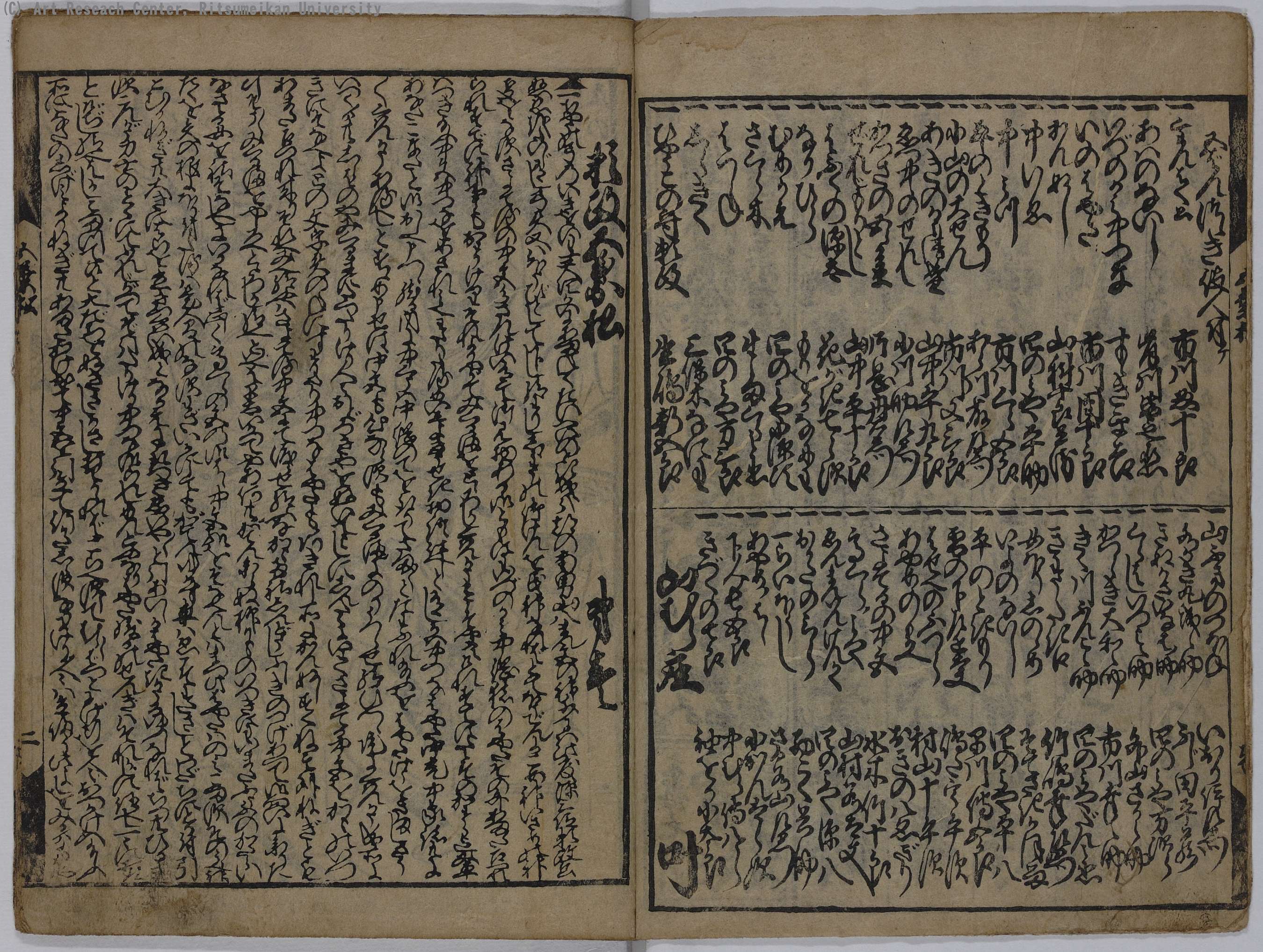A03 Edo edition Eiri Kyogenbon
-
"Yorimasagoyomatsu"
Artist: 津打治兵衞・樋口半左衛門
Performance: January, 1707(Hoei 4) Yamamura-za theatre, Edo
Ritsumeikan Art Research Center(arcBK02-0158)
Genroku Kabuki is the first succession in Kabuki history regarding its establishment of various actors and characters, stable revenue, and abundant programs. Addition to this, acting technique had highly improved during this period as well. In Kyoto, Kabuki developed as Monomane (lit. mimicking) and the acting skill had improved a lot to transcribe customs and behavior of people in every walk of life realistically. Especially, the technique of Wagoto (lit. gentle style) style acting used in Sewa Kyogen (domestic drama), themed in everyday life of the common people, had developed, which known as Sakata Tojyuro and Yoshizawa Ayame.
On the other hand, the acting of Aragoto (lit. rough style), represented by Ichikawa Danjyuro, was favored in Edo. Aragoto improved to represent the heroes' supernatural outstanding in fantasy-mixed historical drama.These complicated story line unlike its early days required a position of specialist Kyogen writers (playwrights). In Edo, actors, such as Miyazaki Denkichi and Ichikawa Danjuro (his name as a writer was Mimasuya Hyogo), doubled playwright until Genroku era. But in Kamigata (Kyoto and Osaka) which were advanced region in culture, expert playwrights who are not actor-turned-writer, its representative is Chikamatsu Monzaemon, appeared much more earlier. The programs they produced introduced advanced stage effects and those elaborate programs attracted people also as reading materials, so were published as Eirihon, book with illustration. In Kamigata, it was published since the 1680s to the Kyoho era (1716-1735). On the other hand, in Edo, it started to be published since 1697 imitating Kyogenbon in Kamigata, but disappeared soon in 1710, so today, only 70 actual books are surviving in the world.
"Yorimasagoyomatsu" displayed here is one of those rare books, while 3 items exist having the same title can be identified. The illustration was painted by an artist belonged to Torii school, and three to four double-page spread illustrations were included in the book. The book is composed of only 10 pages or so including the plot, but it is enough informative to recognize the contents because of the combination of its jammed slender letters and the quality of the illustrations. It is one of the most important materials enable us to know closer the picture of Kabuki in Genroku (1688-1704) era.

In Kamigata, the plot gradually disappeared and changed into Ezukushi, the book with only pictures. In Edo, also the plot became less important and it was alternated by Shibai ehon (illustrated plot book), and later Ehonbanzuke, the book show story line made up of only pictures. (,)[Glossary]
世話狂言、時代狂言、和事、荒事、坂田藤十郎、芳沢あやめ【参考文献】
≪ 続きを隠す
『図説江戸の演劇書』(八木書店) -

- 投稿日:
- by 8P
- カテゴリ: A ARC Collection of Kabuki Materials
- [編集]